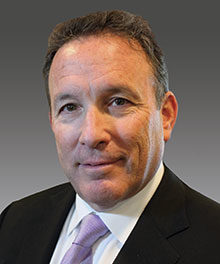Closing the Startup Funding Gap

U.S. venture capital firms invested a record amount in startups with female founders in 2018. It’s about time, you might think. Encouragingly, women entrepreneurs raised $3.3 billion, according to PitchBook – but that all-time high represented just 2.8% of all venture capital last year.
2.8%?!?
That may be a sign of progress but frankly, it’s shocking that it’s not more. A lot more. The business community has been talking about women’s lack of access to capital for decades and supposedly working on addressing it. How can a funding gap this big still exist? There is no shortage of women entrepreneurs with great, scalable ideas. We work with them here at Marcum every day.
There are many reasons experts say women don’t get funded – investing to a large extent is still an old boy’s network, VCs are more comfortable with male leaders, and with few women partners, investors don’t always see the value of products and services that may address pain points that are specific to women. Does unconscious bias come into play here?
It’s time to stop studying the problem and really do something about it. If someone comes up with an innovation that has great potential market appeal or that could help lots of people – or even save lives – it would be a crying shame if it never sees the light of day because the founders happen to be women who’ve been closed out of funding circles.
One business that got the brush off from investors is Dia & Co., a New York City-based home-shopping service for plus-sized women looking for stylish clothes but who couldn’t find a good selection in stores. Dreamed up by Nadia Boujarwah and Lydia Gilbert when they met at Harvard Business School, the business, which was profiled by CNBC, got turned away by early-stage venture capitalists who didn’t understand why there was a demand for the service.
The founders refused to give up. They went on to raise debt financing from friends, family and colleagues. When they finally built the business to several hundred thousand dollars in revenue per month, they hit the fundraising circuit again, even going back to early skeptics. They eventually raised a reported $18 million in a Series A round led by Sequoia Capital.
It’s great that these founders persisted and that investors gave their business a second look, but what happens to all of the women entrepreneurs who have a great idea but didn’t go to Harvard Business School and don’t have a personal network with enough money to help them get started? There’s tremendous loss to the economy. The business community needs to do more to keep the momentum going. No one has a corner on good ideas.
Fortunately, there’s some hope on the horizon. It is now so widely known that diversity and inclusion contribute to better business results that more venture funds are prioritizing this goal and starting to actively reach out to women entrepreneurs through pitching events, seed funds and other initiatives.
But efforts like these have to be part of an ongoing, serious commitment to be effective. Here at Marcum, we work hard to make sure our diversity and inclusion program is constantly improving so we can achieve the diversity of thought that helps our clients achieve the best outcomes. It is a critical part of our business strategy, and we devote substantial resources to it.
On a separate but related note, the Golden Globe nominees were unveiled earlier this week. Of particular note, not one female director was nominated in the motion picture category. Can Hollywood, one of the capitals of supporting diversity and inclusion at all levels, be that tone deaf in today’s social and business climate?
I hope the venture capital industry and other sources of seed capital for businesses will evolve and start opening their doors to women to a greater extent than they already have. I’d be thrilled to hear someday that one or both of my daughters (Lily, presently age 10, and Kate, age 8) are launching a startup. I don’t want to have to be the one to explain to them why they can’t get funding.
